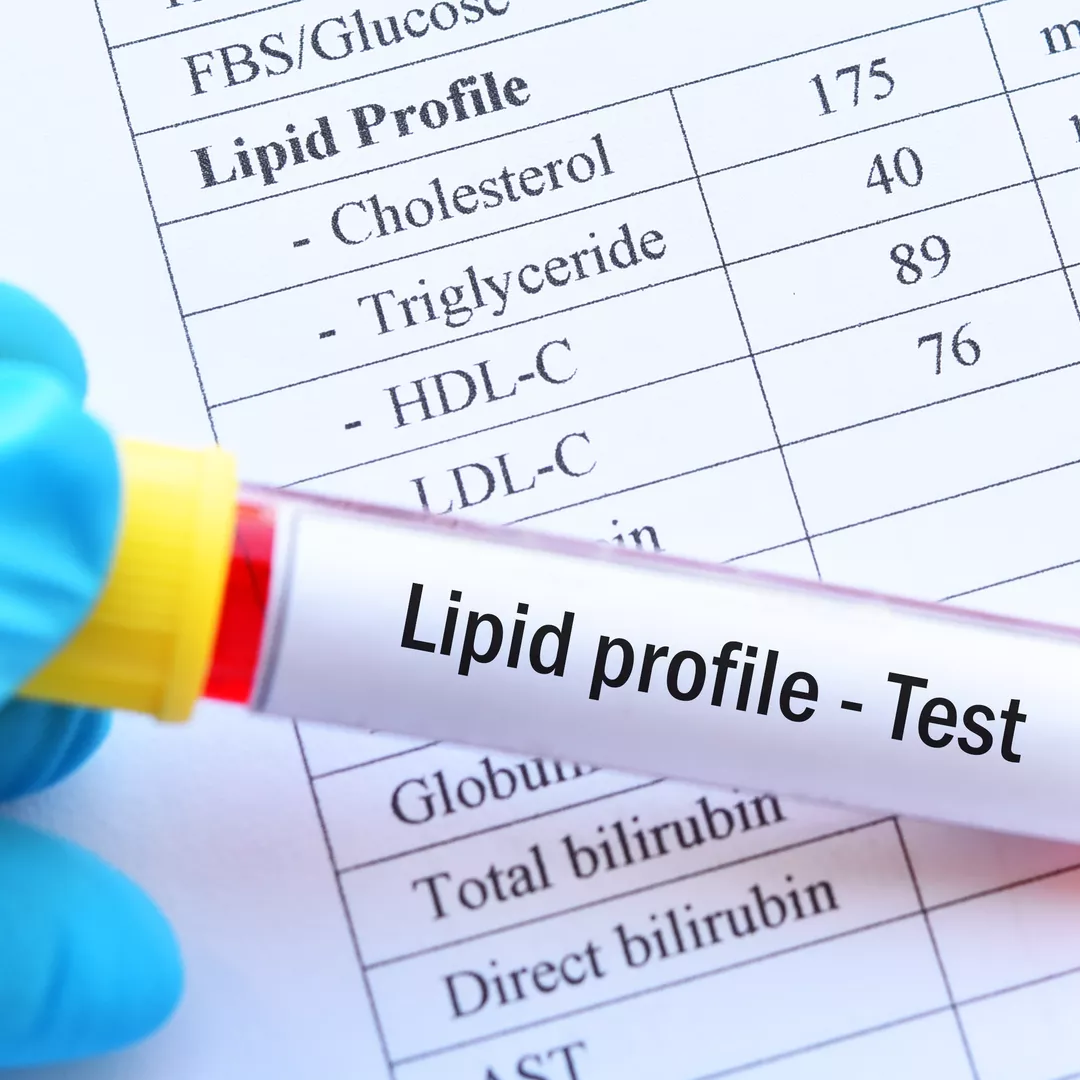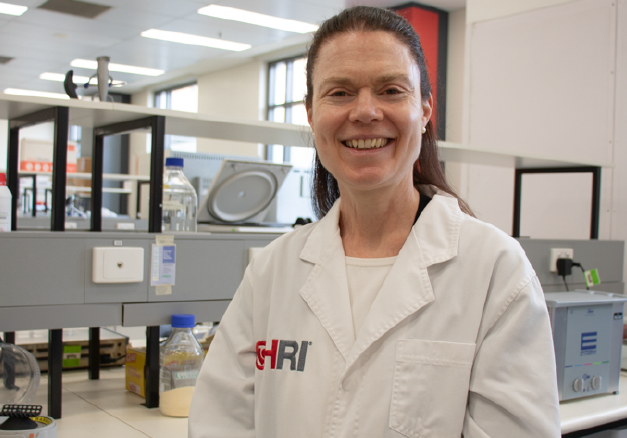
Lipids blood test meaning: what lipids reveal in a routine blood test
Lipids are fat-like substances in your body and body tissues. The three main types of lipids are sterols (cholesterol being the most well-known example), triglycerides and phospholipids.
A complete cholesterol test, also called a lipid profile, is a blood test that can measure the amount of cholesterol and triglycerides in your blood.
In most cases, the test measures the following:
- the total amount of cholesterol in your blood (total cholesterol)
- the level of HDL cholesterol (high-density cholesterol, often called “good cholesterol”)
- the level of LDL cholesterol (low-density cholesterol, often called “bad” cholesterol)
- triglycerides (TG, another type of fat in the body).
Analysing lipid profiles to identify disease
Having an excess amount of lipids (cholesterol and triglycerides) in your blood can lead to a build-up in your blood vessels and artery walls, which can cause damage and increase your risk of cardiovascular disease (CVD).
As a result, doctors use lipid panels for both children and adults to evaluate the risk of CVDs like heart disease, heart attack and stroke.
- Total cholesterol: A high level can increase the risk of heart disease.
- LDL cholesterol: High levels of LDL or “bad cholesterol” can cause atherosclerosis, which is a build-up of fatty deposits in the blood vessels. This disease is the main underlying cause of cardiovascular events (heart attacks, strokes and peripheral artery disease). These plaque deposits sometimes rupture and lead to major heart and blood vessel problems.
- HDL cholesterol: This is sometimes called the "good" cholesterol because it helps carry away LDL ("bad") cholesterol, keeping arteries open and blood flowing more freely.
- TG: High triglyceride levels usually mean you regularly eat more calories than you burn. High levels can also increase your risk of CVD.
Understanding the different types of lipids
Here is further information about the three main types of lipids:
1) Triglycerides make up more than 95 per cent of lipids in the diet and are commonly found in fried foods, butter, milk, cheese, and some meats. Naturally occurring triacylglycerols are found in many foods, including avocados, olives, corn, and nuts. We commonly call the triglycerides in our food “fats” and “oils.” Fats are lipids that are solid at room temperature, whereas oils are liquid.
2) Phospholipids make up only about two per cent of dietary lipids. They are water-soluble and are found in both plants and animals. Phospholipids are crucial for building the protective barrier, or membrane, around your body’s cells. In fact, phospholipids are synthesised in the body to form cell and organelle membranes. In blood and body fluids, phospholipids form structures in which fat is enclosed and transported throughout the bloodstream.
3) Sterols are the least common type of lipid. Cholesterol is the most well-known sterol due to its role in heart disease. However, the body gets only a small amount of its cholesterol through food – the body actually produces most of it. Cholesterol is an important component of the cell membrane and is required to synthesise sex hormones, vitamin D, and bile salts.
What your lipid levels reveal about your heart health
While a certain amount of lipids is important for cell health, they can be harmful when they build up in the blood.
A higher level of “bad” cholesterol may be a sign you’re at increased risk of developing CVD.
Guidelines for target cholesterol levels vary based on factors such as age and family history, so ask your doctor what levels are right for you.
However, in general:
- Total cholesterol levels should be lower than 5.5 mmol/L in adults with no other risk factors for CVD.
- LDL cholesterol levels should be less than 2 mmol/L if you have CVD risk factors or pre-existing CVD or diabetes.
- HDL cholesterol levels should be kept higher and at a minimum of 1.5 mmol/L. Low HDL cholesterol levels can be a major risk factor for CVD.
Safe levels of cholesterol
| Desirable (mmol/L) | Borderline (mmol/L) | High (mmol/L) | |
|---|---|---|---|
| HDL cholesterol | >1.5 | N/A | N/A |
| LDL cholesterol | 1.7–3.5 | 3.6–4.5 | >4.5 |
| Triglycerides | 0.5–1.7 | 1.8–2.5 | >2.5 |
| Total | 3.9–5.5 | 5.5–6.5 | >6.5 |
Why monitoring lipid levels is vital
There are several reasons why you may need a lipid panel blood test. Healthcare providers mainly use lipid panels for screening and monitoring purposes.
If you have one or more risk factors for cardiovascular disease, your doctor may suggest frequent screening through the use of a lipid panel to try to identify elevated cholesterol levels before you have symptoms.
This blood test is usually recommended every five years, starting from age 45. Testing should start at 35 if you are of Māori, Pacific or Indo-Asian ethnicity.
Testing every 12 months is recommended for people with:
- high blood pressure
- diabetes
- heart disease
- stroke
- kidney disease.
Are you at risk? You can check your risk for heart disease, type 2 diabetes and kidney disease here.
Your doctor may also suggest more regular testing if you are being treated for high cholesterol, to evaluate your response to treatment such as lifestyle changes or cholesterol medications.
You will usually need to fast for 8 to 12 hours before having this test.
The power of lipids in diagnostic testing
While doctors mainly use lipid panels for screening or monitoring cholesterol levels, they sometimes use the test to help diagnose certain health conditions that can affect your lipid levels, including:
- pancreatitis
- chronic kidney disease
- hypothyroidism.
The basics of lipid metabolism and how it impacts health
Lipids are absorbed from the intestine and undergo digestion and metabolism before they can be used by the body.
Lipid metabolism plays a very important role as the central metabolic process of the body. It is the breakdown and storage of these fats and complex molecules to either generate energy or synthesise new lipids. In animals, these fats are obtained from food and are synthesised by the liver.
If the process is interrupted, it can cause many chronic diseases, including diabetes and obesity.
Excessive levels of circulating lipids have also been linked to other metabolic diseases and cancer.
Practical ways to monitor lipids and improve health
Since many factors contribute to CVD, there’s no one single way to treat abnormal levels of cholesterol and/or triglycerides.
If you have abnormal lipid panel results, your doctor may recommend continued lipid monitoring or may prescribe a cholesterol-lowering medication.
They may also recommend the following lifestyle tips.
- Eat fewer calories.
- Eat less saturated fat, such as full-fat dairy foods.
- Choose whole grains, fruits, vegetables and reduced-fat dairy products.
- Exercise regularly.
- Sleep seven to nine hours every night.
- Strive for a weight that’s healthy for you.
- Stop smoking.
The relationship between diet and lipid levels
What you eat and the types of fat in your diet can help determine the amount of cholesterol in your blood. Your liver actually produces enough cholesterol itself, so you don’t need to get it from food.
A diet high in saturated fat can lead to high LDL cholesterol levels and further lead to plaque build-up in the walls of your arteries. This restricts blood flow and can lead to a heart attack or stroke.
To reduce your levels of bad cholesterol and triglycerides, follow a heart-healthy eating pattern. There are certain foods that cause your “bad” cholesterol (LDL) level to rise higher than normal, while others can help lower your LDL level.
Opt for a variety of fresh and unprocessed foods, and limit unhealthy fats, salt and added sugar.
A heart-healthy eating pattern is high in wholegrains, fibre, vitamins, minerals and healthy fats.
Cardio-Metabolic Lipidology and Lipidomics Research Group



